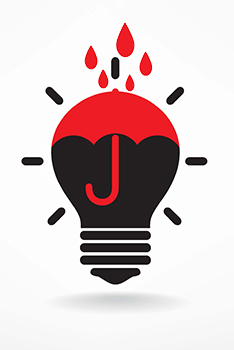 June 18, 2014 – If you practice patent law, you certainly know about so-called “patent trolls.” If not, you may have heard the term – most recently in relation to high-profile cases involving big corporations or federal and state patent law legislation.
June 18, 2014 – If you practice patent law, you certainly know about so-called “patent trolls.” If not, you may have heard the term – most recently in relation to high-profile cases involving big corporations or federal and state patent law legislation.
For instance, Wisconsin recently enacted 2013 Wisconsin Act 339, which relates to notifications and communications concerning the assertion of patent rights.
The law is designed to deter so-called “patent trolls” from threatening businesses with meritless patent infringement suits that can cost big money to fight. For lawyers who represent businesses in Wisconsin, the law is an important tool to understand.
This article provides a basic overview of Wisconsin’s new anti-patent troll law. But first, it provides a brief explanation on the rise of so-called patent trolls, and the issues that have sparked debate, legislation, and litigation aimed at balancing the patent paradigm.
What is a Patent Troll?
Peter Detkin, then assistant general counsel for Intel Corporation, coined the term “patent troll” in the late 1990s with emergence of software and other technology. Detkin was referring to the relatively unknown software companies in Silicon Valley that had threatened Intel with patent infringement lawsuits.
In general, the term refers to entities that acquire portfolios of patents and then seek license fees or legal judgments for patent infringement against businesses.
Patent trolls came into the spotlight in the 2000s amidst legal controversies involving companies that developed products using patented components or functions held by entities that acquired the patent rights but did not practice the patented invention.
Research in Motion (RIM), the company that owns BlackBerry®, was sued for patent infringement in 2006 by a patent holding company. At the time, BlackBerry’s popularity was increasing among professionals. The question became: could patent law really cut off a communication lifeline for attorneys, business people, and government officials?
Don’t Miss the Ninth Annual Door County Intellectual Property Academy
For cutting-edge analysis of today’s hottest IP issues, attend the Intellectual Property Academy July 17-18, at the State Harbor Resort and Conference Center in Sturgeon Bay, presented by the State Bar’s Intellectual Property and Technology Law Section.
This year's IP Academy will feature world-renowned speakers, including a chief judge, a USPTO Official, leading in-house counselors, and IP subject matter experts, all presenting best-in-class IP CLE sessions. Bring the family too!
Register by June 27 and receive a $50 early-bird discount off tuition rates.
As that litigation moved toward settlement, a dispute between eBay and MercExchange made its way to the U.S. Supreme Court over the issue of patent injunctions in 2006.
Patents posed threats not only to Blackberry device users but also functions of Internet auctions (and possibly other web sites). With these consumer concerns in mind, the U.S. Supreme Court ruled that patent injunctions were not mandatory, but discretionary.
While the individual justices differed on how courts should determine whether to grant an injunction, the policy of preventing interference by patent owners with the marketing and sales of an established product came out in the various opinions authored by the justices. Judicious grant of injunctions was one way to limit the harm to consumers from patent enforcement by patent owners that hold patents for the sole purpose of litigation.
Forms of Patent Trolls
Ever since these controversies, the figure of the “patent troll” has taken on different forms. The basic traits include ownership of a patent for the sole purpose of litigation without manufacturing a product or providing a service. However, this description only captures some aspects of patent owners that are now generally described as “trolls.”
A nonpracticing entity (NPE) has been a popular and less offensive term than trolls. NPEs are entities that own patents but do not manufacture the patented inventions.
Intellectual Ventures, a company that purchases patents, is the most common example of an NPE. But the University of Wisconsin-Madison, and most universities, would be considered nonpracticing entities, too. Universities do not manufacture patented inventions for good reason. Their business is teaching and research, not manufacturing.
Nonetheless, universities do generate income from patents through royalties and enforcement of patent rights in litigation. For instance, the Wisconsin Alumni Research Foundation (WARF), U.W.-Madison’s patent management arm, sued Apple in federal court in February, claiming Apple used WARF’s patented technology in its products.
Other new labels emphasize some of the benefits from entities that own but do not practice the patented invention in terms of using the patent in a product or service.
Patent Aggregation Entities (PEAs) purchase patents granted to disparate inventors and entities in order to create patent packages that combine complementary technologies. Acacia Research holds several hundred patents across a wide range of technologies which are licensed to such companies as Microsoft, Walt Disney, and Nokia. Acacia also is aggressive in bringing lawsuits to enforce its acquired patent rights.
Another label is Patent Monetization Entity (PME), which licenses patent portfolios and generates revenues that sometimes benefit inventors and original patent owners.
Parsing Patent Trolls
This alphabet soup (NPE, PAE, PME) reveals the complexity of what Detkin generically labeled “patent trolls.” Detkin coined the term to disparage entities that used patents for litigation purposes alone. But so called trolls can have benefits. Not all patents can be practiced, but licensing is an important function of patent ownership.
Furthermore, enforcement of patent rights through litigation supports and encourages licensing. Licensing is the main legal mechanism through which patents can be monetized, generating income and wealth for inventors and patent owners.
The new labels for patent trolls emphasize these benefits, raising the question: what’s wrong with an entity owning a patent solely for the purpose of litigation?
 Shubha Ghosh is a Vilas Research Professor of Law at U.W. Law School. He teaches courses on intellectual property law and transactions and lectures on patent law issues at a number of universities. During the next academic year, he will be the inaugural American Association for the Advancement of Science (AAAS) Law & Science Fellow at the Federal Judicial Center in Washington, D.C. Reach him by email or by phone at (608) 262-1679.
Shubha Ghosh is a Vilas Research Professor of Law at U.W. Law School. He teaches courses on intellectual property law and transactions and lectures on patent law issues at a number of universities. During the next academic year, he will be the inaugural American Association for the Advancement of Science (AAAS) Law & Science Fellow at the Federal Judicial Center in Washington, D.C. Reach him by email or by phone at (608) 262-1679.
Critics of patent trolls, whatever the label, point to the fact that much litigation might be extortionate. Some patent owners use the threat of litigation to extract a settlement.
This type of trolling behavior is reflected in the practice of mass mailing of cease and desist letters to any company, no matter how small, claiming patent infringement and encouraging a settlement payment.
While such behavior serves to monetize patents, it does so at the expense of small businesses and entities that may in fact not be infringing. Critics also point out that many patents, especially vague software patents, may not be valid.
Settlements make legal challenges to patent validity impossible, allowing trolls of all stripes to exploit a defective patent system through the federal courts.
Furthermore, litigation costs hurt small businesses more than large entities, and the conventional wisdom is that patent trolls have been preying on small entities through its practices. Much more needs to be known, but nonetheless the view among policymakers and legislators is that failed patent law and problems in the litigation system have created an environment that allows for abuses by patent owners. Legal reform of various kinds has been the consequence of this pervasive viewpoint.
Patent Reforms
The State of Wisconsin’s recent enactment of anti-patent troll legislation is one example of the wide ranging federal and state law reforms. At the federal level, proposed changes include reforms to the patent system and the rules of civil litigation.
The U.S. Supreme Court has considered over a dozen cases involving changes to the patent system which would make it less likely for the granting of invalid patents.
Congress has considered changes to civil litigation, such as changes in the joinder rules, pleading requirements, and the rules for shifting attorney’s fees, all aimed at making it more difficult to bring patent litigation.
States have no jurisdiction over patent law or federal courts and consequently have pursued reforms aimed at deceptive and abusive practices by patent owners as they pursue their litigation strategies. Wisconsin’s new legislation fits into this mold.
2013 Wisconsin Act 339
Act 339 applies to “patent notifications” received after April 25, 2014. A patent notification is a “letter, email, or other written communication attempting in any manner to enforce or assert rights in connection with a patent of pending patent.”
Every patent notification must contain specific information or it is deemed incomplete. No patent notification may contain false, misleading, or deceptive information. The information that the patent notification must contain includes the following:
The number of each patent or patent application that is the subject of the patent notification;
A physical or electronic copy of each patent or pending patent;
The name and physical address of the owner of each patent or pending patent and all other persons having a right to enforce the patent or pending patent;
An identification of each claim of each patent or pending patent being asserted and the target’s product, service, process, or technology to which that claim relates;
Factual allegations and an analysis setting forth in detail the person’s theory of each claim identified under subd. 4., if any, and how that claim relates to the target’s product, service, process or technology; and
An identification of each pending or completed court or administrative proceeding, including any proceeding before the U.S. patent and trademark office, concerning each patent or pending patent.
If the patent notification does not contain all this information, the target may notify the person who sent the notification that it is incomplete. Within 30 days, a notification must provide the target with the information required in order for the target to respond.
Patent notifications that do not contain required information or contain false, misleading, or deceptive information are subject to a $50,000 fine for each violation.
Aggrieved parties may commence actions seeking damages with a right to reasonable attorney’s fees, in addition to punitive damages not exceeding $50,000 for each violation or three times the aggregate amount awarded for all violations, whichever is greater. Certain patent notifications are exempt from the law, including:
notifications sent from institutions of higher education;
notifications sent from health care or research institutions;
notifications concerning patents or pending patents subject to approval by the federal food and drug administration or the federal department of agriculture; and
patent notifications attempting to enforce or assert a right under 35 U.S.C. § 271(e)(2) or 42 U.S.C. § 262.
Conclusion
Other states are making similar efforts to deter patent trolls from threatening to bring lawsuits that induce businesses to settle with sometimes weak or baseless claims of patent infringement. And recent cases are changing patent and procedural rules in order to curb abusive litigation.
While licensing is an important function of patent ownership, and enforcing patent rights is a cornerstone of the U.S. patent system, limiting abuses will improve the system. Lawyers on both sides of the issue will benefit from staying informed in this area.
Editor’s Note: State Bar of Wisconsin Legal Writer Joe Forward contributed the section on “2013 Wisconsin Act 339.”
